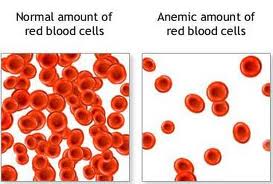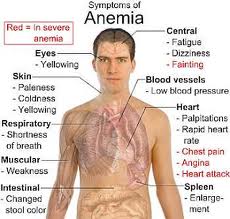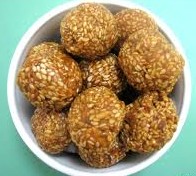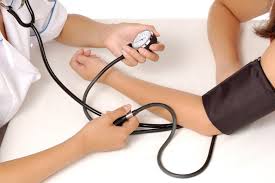HOW TO TREAT ANAEMIC CONDITION
October 24, 2013 by admin
Filed under Tips for Ayurveda
You may be feeling weak, dizzy, panting for breath when you climb stairs or walk for short distances. Your skin will be looking pale. These are the signs of being anaemic. Do not overlook this health condition as the consequences are at times serious.
 Anaemia may be defined as a condition in which there is a decrease in the quantity of haemoglobin or in the number of red blood cells. Nearly half the blood flowing in our veins and arteries consists of red blood cells which carry oxygen to the tissues. Approximately one trillion or 100 million new blood cells are formed daily in the bone marrow. The raw materials required in the production of these cells are iron, proteins, and vitamins, especially folic acid and B12. Of these, iron and proteins are essential in building up the red coloring matter called haemoglobin. A red cell has a lifespan of approximately one hundred and twenty days and is then destroyed and replaced. Each person should have about 15 gm of haemoglobin per 100 ml of blood, and a blood count of approximately five million red cells per millimetre of blood.
Anaemia may be defined as a condition in which there is a decrease in the quantity of haemoglobin or in the number of red blood cells. Nearly half the blood flowing in our veins and arteries consists of red blood cells which carry oxygen to the tissues. Approximately one trillion or 100 million new blood cells are formed daily in the bone marrow. The raw materials required in the production of these cells are iron, proteins, and vitamins, especially folic acid and B12. Of these, iron and proteins are essential in building up the red coloring matter called haemoglobin. A red cell has a lifespan of approximately one hundred and twenty days and is then destroyed and replaced. Each person should have about 15 gm of haemoglobin per 100 ml of blood, and a blood count of approximately five million red cells per millimetre of blood.
In Ayurveda, anaemia is known as Pandu Roga. It is one of the most important and very common dietary deficiency diseases.
Symptoms of anaemia:
The patient usually complains of weakness, fatigue, lack of energy and dizziness. The patient have a pale face, tired look, wrinkles appear on face, dull and tired looking eyes, poor memory, shortness of breath on exertion, headache, slow healing of wounds, and palpitations. The skin and mucous membranes look pale.
Causes of anaemia:
Iron is required to produce haemoglobin. The deficiency of iron is the main reason to cause anaemia. Anaemia may be caused due to loss of blood through heavy menstruation, child birth, injury, bleeding from the gastro-intestinal tract, deficiency of iron and vitamins in the body and defect in the formation of the blood in the body due to drugs, toxins and infections. Lack of hydrochloric acid in the stomach or worms can be a major cause for anaemia.
Treatment of aneamia –Diet changes
Spinach is a valuable source of high grade iron. After its absorption, it helps in the formation of haemoglobin and red blood cells. It is thus beneficial in building up the blood, and in the prevention and treatment of anaemia. Include Green leafy vegetables in your meals atleast thrice a week.
Beetroot juice contains potassium, phosphorus, calcium, sulphur, iodine, iron, copper, carbohydrates, protein, fat, vitamins B1 B2, B6, niacin, and vitamin P. With their high iron content, beets help in the formation of red blood cells.
Vitamin B12 is is usually found in animal protein, especially in meats such as kidney and liver. Other good sources of vitamin BI2 are dairy products.
Almonds contain copper along with iron and vitamins. Seven almonds should be soaked in water for about two hours and ground into a paste after removing the thin red skin. This paste may be eaten once daily in the morning for three months.
 Til seeds and jaggery should be taken regularly as these are rich in iron. You can have in the form of til laddu. Children will love til and groundnut chikki too.
Til seeds and jaggery should be taken regularly as these are rich in iron. You can have in the form of til laddu. Children will love til and groundnut chikki too.
Usually when diet taken has high iron content and folic acid, the individual will have constipation issues. A mild laxative should be given to cure constipation as it may aggravate the condition.
There are many ayurvedic formulations recommended for curing anaemia. Meet the vaidyar at the center near our home and consult your health problems.
Women are the most affected by anaemia. Mainly because they over work and give less importance to a balanced diet. Make corrections in diet and live a healthy life. Exercise daily, go for a brisk walk for 30 mins daily. These are ways to keep oneself active and lively.
COMMON FOODS TO LOWER HIGH BLOOD PRESSURE
October 4, 2013 by admin
Filed under Tips for Ayurveda
 Hyper tension is also known as High Blood pressure. High Blood pressure(BP) can lead to Heart attacks, Strokes and paralysis of the body as it affects the brain too.
Hyper tension is also known as High Blood pressure. High Blood pressure(BP) can lead to Heart attacks, Strokes and paralysis of the body as it affects the brain too.
Most people with high blood pressure have no signs or symptoms, even if blood pressure readings reach dangerously high levels.
Although a few people with early-stage high blood pressure may have dull headaches, dizzy spells or a few more nosebleeds than normal, these signs and symptoms typically don’t occur until high blood pressure has reached a severe — even life-threatening — stage.
If you are diagnosed with hypertension i.e. a systolic/ diastolic pressure of 140/90 mmHg or above, then along with medications, you ought to make certain lifestyle changestoo, mainly – your diet.
Read this article Simple ways to include Ayurveda in everyday life
Risk factors:
High blood pressure has many risk factors, including: age, family history, being over weight or obese, not being physically active, using tobacco, too much salt in your diet, drinking too much alcohol, Stress and certain chronic heath ailments like high cholesterol, diabetes, kidney diseases and sleep disorders.
Complications:
Uncontrolled high blood pressure can lead to : Heart attack or stroke due to hardening and thickening of the arteries, Aneurysm due to weakening and bulging of blood vessels leading to rupture and blood loss, Heart failure, improper functioning of other critical organs. Affects brain functioning – ability to think, understand, remember and learn too.
How diet can lower High Blood pressure:
Diet is the first line of defense for prevention of hypertension and related diseases.
A healthy diet is one of the most powerful ways to lower blood pressure. Many commonly available foods can reduce your High blood pressure in as little as two weeks. Allocate adequate time for sleep, exercise and you can see the major difference.
1. Sprouts
Sprouts contain an antioxidant called glucoraphanin that has the ability to lower blood pressure and reduce the inflammation in the heart, arteries and kidneys. The effects of this antioxidant can also reduce the risk of stroke and heart attack. Be sure to eat fresh sprouts as they have the highest concentration of proteins, minerals, enzymes, antioxidants, anticarcinogens, vitamins and minerals.
2. Spinach
Spinach is a folate-rich food that can lower your risk of hypertension. This leafy green vegetable also provides a completely absorbable, balanced protein along with antioxidants that help lower blood pressure.
3. Bananas
Bananas have a high content of potassium, which is known to lower blood pressure and reduce the risk of stroke. Bananas are also low in sodium, which is important for people with high blood pressure to avoid. Just one banana a day can provide a dose of potassium, helping to reduce blood pressure and fend off various cardiovascular diseases. Along with bananas, you can also eat other fruits such as apples, plums, pears, pomegranate, and mangoes.
4. Garlic
Garlic has anti-inflammatory and antiviral properties that can fight coronary heart disease by unplugging arteries. The gas that garlic produces in the stomach relaxes your arteries and lowers blood pressure. Eating one garlic clove a day can significantly reduce your blood pressure in as little as three months.
5. Tomatoes
Tomatoes contain lycopene, an antioxidant that helps protect your cells from the damaging effects of free radicals. The lycopene and other carotenoids found in tomatoes help in reducing high blood pressure and lowering the risk of heart disease. Tomatoes also contain nutrients such as calcium, potassium, and vitamins A, C and E that are good for your overall health. Tomatoes can significantly lower both systolic and diastolic blood pressure among those who have hypertension.
6. Potatoes
Potatoes are rich in potassium and also contain a blood pressure-lowering compound called kukoamines. They also contain an assortment of minerals and vitamins, such as vitamins C, B6, B1 and B3; magnesium, iron, zinc and phosphorus; as well as carotenoids and natural phenols. All these minerals and vitamins are good for your overall health. For best results, be sure to prepare your potatoes without frying them and eat them without adding butter, margarine or sour cream.
7. Almonds
Nuts like almonds provide protein and healthy fats that are good for your health. The high amount of good protein in almonds and almond milk helps lower high blood pressure and fight against diabetes and cardiovascular disease. The monounsaturated fats in almonds have been found to lower cholesterol levels, reduce arterial inflammation, and ultimately lower blood pressure. The potassium present in almonds can reduce the negative effects of sodium on blood pressure. Healthy fats also promote cardiovascular health.
8. Olive Oil
Olive oil has free radical-fighting antioxidants known as polyphenols. Olive oil also is high in monounsaturated fatty acids like oleic acid, which helps prevent high blood pressure. However, it is essential to bear in mind that olive oil loses much of its health benefits when heated. Due to this, try to use olive oil without cooking it. You can drizzle it on a salad or stir it into a bowl of roasted potatoes to enjoy maximum benefits.
9. Celery
This crunchy green vegetable has a compound called 3-n-butyl phthalide that relaxes the smooth muscle lining in blood vessels, reducing blood pressure. Celery is also a good source of vitamins and minerals, including vitamin C, potassium, calcium and magnesium that help reduce blood pressure.
10. Salmon
The omega-3 fatty acids as well as EPA (eicosapentaenoic acid), primarily found in cold-water fish like salmon, reduce inflammation and prevent high blood pressure. Also, salmon has low fat and high protein content that is good for people with high blood pressure. You can also eat other cold-water fishes such as mackerel, halibut, anchovies, tuna, and herring. If you do not like the taste of fish, you can opt for fish oil supplements.
These common foods can help lower your blood pressure, in very little time for few individuals. In addition, limit your intake of sugar and saturated fats as they can increase inflammation and harden your arteries, which results in hypertension.
Prevention of High Blood pressure:
Lose weight, Exercise regularly, Cut down salt intake, Cut down coffee intake, Limit the amount of alcohol , Stop smoking
Foods to avoid: Papads and pickles, Canned and Processed foods, Frozen foods, etc.
Go ahead, Be happy, Live long and healthy….







